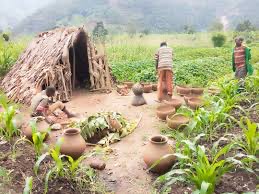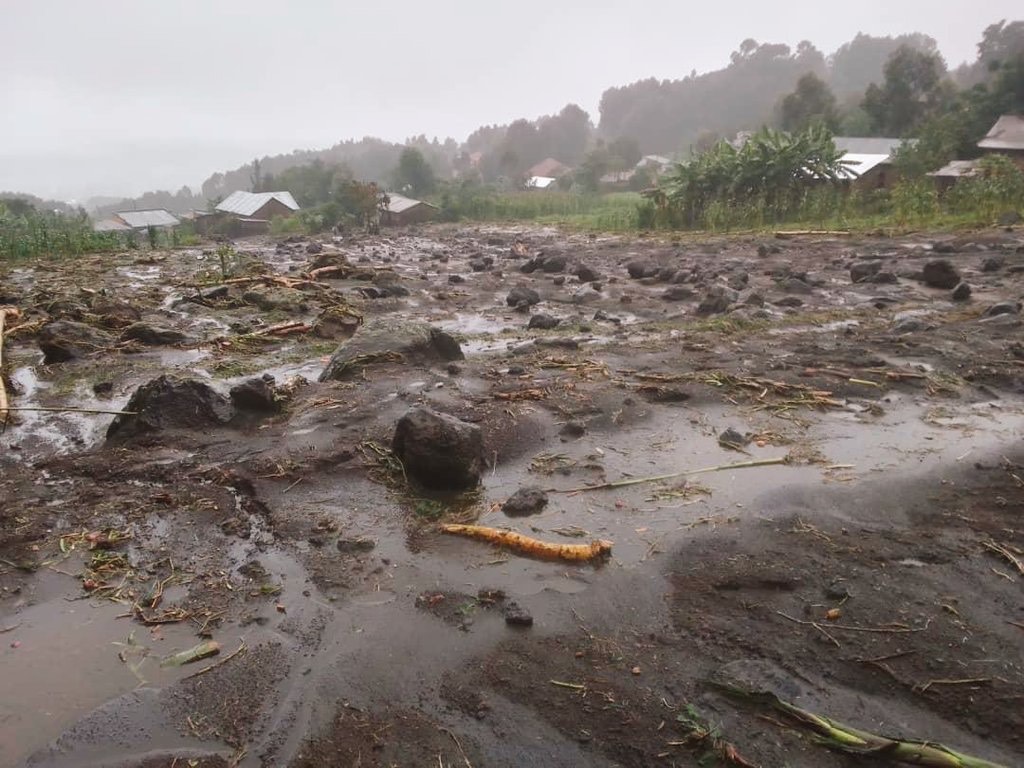People who live in Musanze District especially in the sectors of Gataraga and Shingiro and who were traditionally known for making clay pots, say they have lost access to clay, which was their main source of income. They explain that because of heavy rains, the places where they used to get clay are now covered, and they can no longer find good quality clay to continue their pottery work.
These potters say this started after strong rains washed away the clay deposits. The rainwater went over the clay sources, mixing it with sand and making it unusable.
Nzabonariba Deogratias, an 86-year-old man from Mugari Cell in Shingiro Sector, says that pottery was his only source of income for many years, but now he has nothing to do.
He says, “The reason you see us just sitting here is because we no longer have work. We can’t find any clay since the disasters that happened last year. The rains destroyed everything. The hills collapsed, and the sand mixed with the clay. Now it’s just a mess.”
Nyiramana Steria, another potter, explains that ever since the rains caused landslides and overflowed into their clay source, it has been impossible to find any usable clay in the area. The swamp they used to get clay from is now full of sand.
She says, “It’s all sand now, not clay. The clay is completely gone. Since last year, we haven’t even smelled the scent of fresh clay. Our work yards are empty no one is making pots anymore. How can we mold pots using dust?”

The potters believe that the unusual heavy rains that caused this problem were likely caused by climate change. They say that in the past, rains would come but they could still find clay to continue their pottery. Now, the situation is different.
Claudien Nsengimana, the Mayor of Musanze District, responded to the situation and said that the local government is working on supporting citizens affected by natural disasters.
He said, “All citizens in Musanze who need support are being helped through various government programs. This includes giving livestock and showing people job opportunities. Many factories and large projects are being built in this district, which can provide employment to the people. If these potters have a unique skill, we will look into it. I also want to tell them that there is a plan to solve people’s problems in the district, as part of this year’s budget and agreements with our partners. We will meet with the potters and talk about what can be done.”
After climate change caused extreme rains in the Western and Northern parts of Rwanda, the national weather agency Meteo Rwanda explained that the country’s changing weather is linked to events happening in the oceans, which affect the climate in Rwanda and can bring disasters.
Aimable Gahigi, the Director of Meteo Rwanda, said, “Science shows that Rwanda’s changing weather is linked to changes in the oceans. When ocean temperatures rise, it brings more rain to this region. These unusual warm conditions are called El Niño, and they cause more rain than expected. On the other hand, when the ocean is cooler called EL Niño rain decreases in Rwanda and goes to other regions instead.”
The Ministry in charge of emergency management, MINEMA, says that disasters caused by climate change are among the most expensive challenges Rwanda faces. The country spends about 300 million US dollars every year to respond to damage caused by disasters.
By Marie Louise Mukanyandwi.















Leave feedback about this